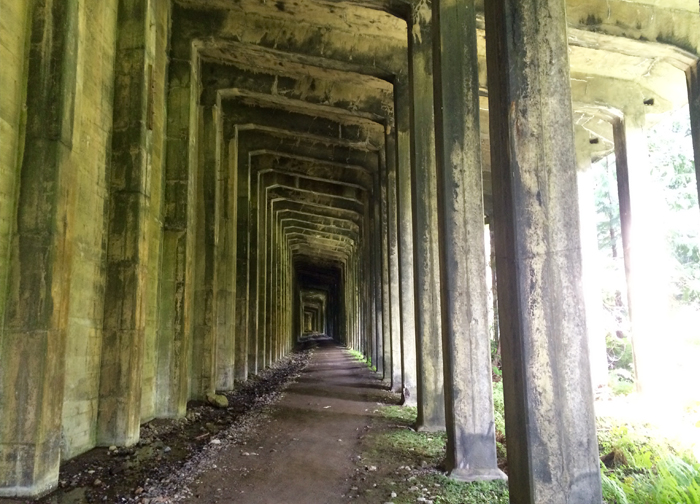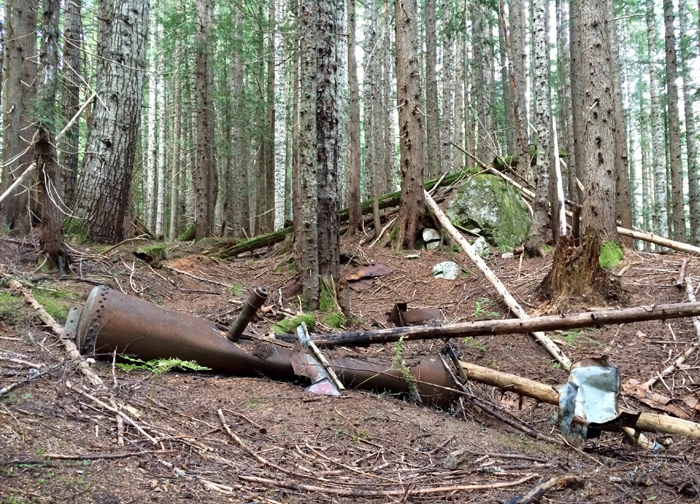About five years ago I read a book entitled White Cascade: The Great Northern Railway Disaster and America’s Deadliest Avalanche. In fact, I mentioned the book on this very blog. Let me quote myself:
“It’s about the massive storm of 1910 that shut down the rail lines in Stevens Pass just west of Leavenworth, and the resulting avalanche that swept two trains and a hundred people into the canyon below Wellington. The author, Gary Krist, is a novelist, and that makes a huge difference: instead of a dry historical account, you get a beautifully crafted story, with characters, plot, and a climactic chapter that is simply breathtaking. And not a word of invented dialogue, either.”
Last week, I finally got a chance to visit the site of the disaster. And it’s every bit as chilling as you might imagine.
After a 700-foot elevation gain over the first mile, the trail levels out, following (for the most part) the old Great Northern rail bed.
At about the 3.5-mile mark, you enter a massive concrete snow shed. It was built in 1911—the year after the avalanche—on the site where the two trains were hit by a wall of snow, ice, mud, and rock 14 feet high and a quarter of a mile wide. Toward the end of the snowshed, an overlook indicates the precise location where the trains went down. Naturally, I interpreted that as an invitation. So I skirted the fence, picked my way through some dense overgrowth, and descended (via a rope someone had thoughtfully left behind) to the bottom of the Tye River Canyon.
And there it was: the 106-year-old wreckage of Passenger Train 25 and Mail Train 27, scattered over hundreds of yards across the forest floor. While some of the passengers had been killed instantly, others survived the impact—only to suffocate under several feet of densely packed snow. It was four months before the last body was recovered.
People say the place is haunted. I don’t know about that. But there’s a stillness there among the trees that’s, well…unsettling. Not sure I’d want to be there when the sun goes down.





by Linda